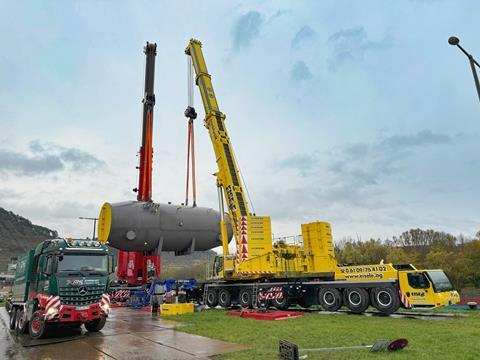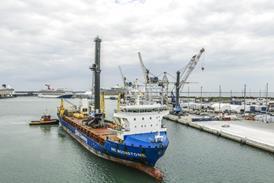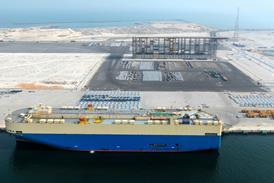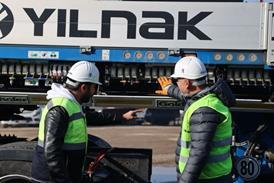Project freight forwarder deugro has delivered critical components for a large-scale carbon capture and utilisation (CCU) facility, which is being built at a cement plant in Lengfurt, Germany.

On behalf by Linde Engineering, deugro’s scope included delivering four 75-tonne storage tanks – measuring of 30.45 m x 4.8 m x 4.8 m – from Türkiye, via Belgium, and a 180-tonne heat exchanger from Haren, Germany, to the construction site.
The tanks were picked up from the supplier’s facility in Kayseri, Türkiye, by special lowbed trailers and moved to the port of Iskenderun. Shore cranes then loaded the units onto a coaster vessel for their ocean voyage to the port of Antwerp. Here, the tanks were loaded onto barges and shipped to a private jetty in Lengfurt, where 16-axle modular trailers – with additional cargo deck extensions – were on hand to transport the cargoes for the final leg of the journey.
The heat exchanger, measuring 13.5 m x 5.35 m x 5.50 m, was loaded onto a barge at the supplier’s premises in Haren and also shipped to the Lengfurt jetty. It was unloaded onto a similar truck-trailer configuration by two mobile cranes operating in tandem.

Although only 2 km long, the on-carriage from the river port in Lengfurt to the construction site posed the biggest challenge, said deugro. The route encompassed mountainous sections with considerable road gradients as well as narrow sections through a village with 90-degree sharp turns.
Added to that, deugro had to contend with a tight just-in-time schedule and delivery sequence as well as local road regulations for abnormal loads, which meant the deliveries could only happen at night and with several preparations. This included placing no-parking signs as well as organising police and private escorts for blocking the route during the ongoing transport.
With a capture capacity of 70,000 tonnes of CO2 per year, the facility is scheduled to go into operation later this year.
















